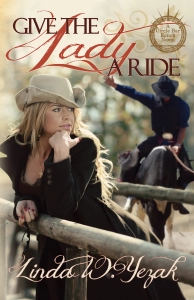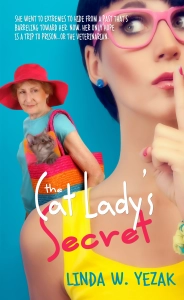Wednesday, I asked my readers here and elsewhere what aids they use to visualize book characters–cover, context, or character casting by the author. The disparity in response between people who read and people who write took me by surprise.
As I said, I’m a minimalist. When I write I tend to toss in a few details here and there, but leave the actual visualization to the reader. I discovered I’m not the only writer who prefers this, but guess what? Readers want description. In the words of one lady, “Lots of it!”
Of course, I doubt that means she wants pages describing each wart and freckle, but she does want to know the character has warts and freckles. She wants a clear image of who the author has in mind, and she doesn’t want it through actors’ photos.
One Twitter friend let me know right fast that when the cover art doesn’t match the character description it tinges her view of the entire book. She bought a book with a beautiful brunette on the cover, then discovered the character was strawberry blond. Having just gone through the process myself (for my video, not my cover), I know how hard it is to find pictures to match what the writer has in mind, but what this lady described shouldn’t have happened.
To provide “lots” of character description without bogging the text, without being too apparent, without bouncing out of POV is a challenge. For romance writers, it shouldn’t be too difficult since we’re required to throw the two main characters together as soon as possible. Each one describes the other. But for others, particularly those who write in first person, the challenge is to avoid cliche means of description–the mirror routine, the clothes selection process–unless those methods receive a face-lift, a unique twist.
Back to cover art: character depiction isn’t necessary, according to some who responded–something we all know is true. What’s important is that the cover is intriguing. It doesn’t even have to give a good representation of what the story’s about–that’s what back-cover copy is for. An intriguing cover lures readers to pick up the book and read the back, flip through the pages, read a passage or two. It’s one of the most valuable marketing tools out there, but it doesn’t rank as one of the means for readers to visualize the characters.
They seem to want description. Lots of it.



















Wow, a lesson well received. So readers want more description. I guess a wise writer would heed that. Descriptions are a fun thing. But like you said it’s a challenge to do it right. Don’t wanna plop it all out there like a round bail of hay for the cattle. (See I can be western, too. LOL)
Thanks for a great post, Linda.
LikeLike
Giggle! Yep, anyone who can talk about hay bales can call themselves western. Or country. Raising hay is as agricultural as raising bulls!
LikeLike
I don’t know that I’ve ever read a book in which the description was well placed and found myself thinking: Too much description, get on with it. On the other hand, I’ve definitely been frustrated when I’ve felt the author hasn’t given me enough cues to visualize the character.
LikeLike
I recently read one where the character description distracted me no end–it was amazingly awkward. I almost put the novel down, but the premise was so intriguing, I chose to ignore the flaws and quirks. Glad I did this time, but I don’t think I’d do it often.
LikeLike
Sometimes with a recurring character in a series, such as my Coalition Trilogy, I’ll forget to describe him or her after the first incident. Inserting it later is a challenge. Can I sneak it in without affecting the plot or the dialogue? But if I do it too unobtrusively, it may not be noticed and the effort would be lost.
What to do, what to do?
~ VT
LikeLike
Victor–one thing to keep in mind in your series is that your character should change over the duration of time. Periodically slap a wrinkle or gray hair on him, a scar from a recent battle. Give your reader a sense of time continuation.
Free advice. Usually worth what ya pay for it! 😀
LikeLike